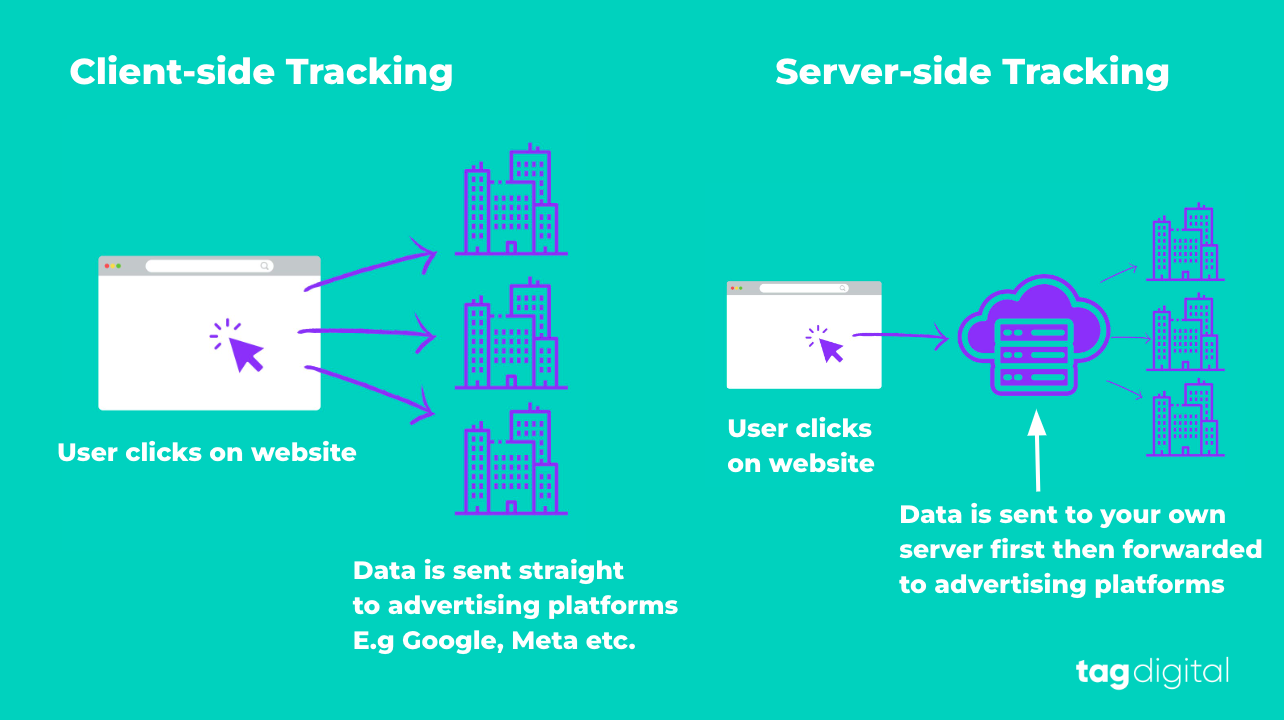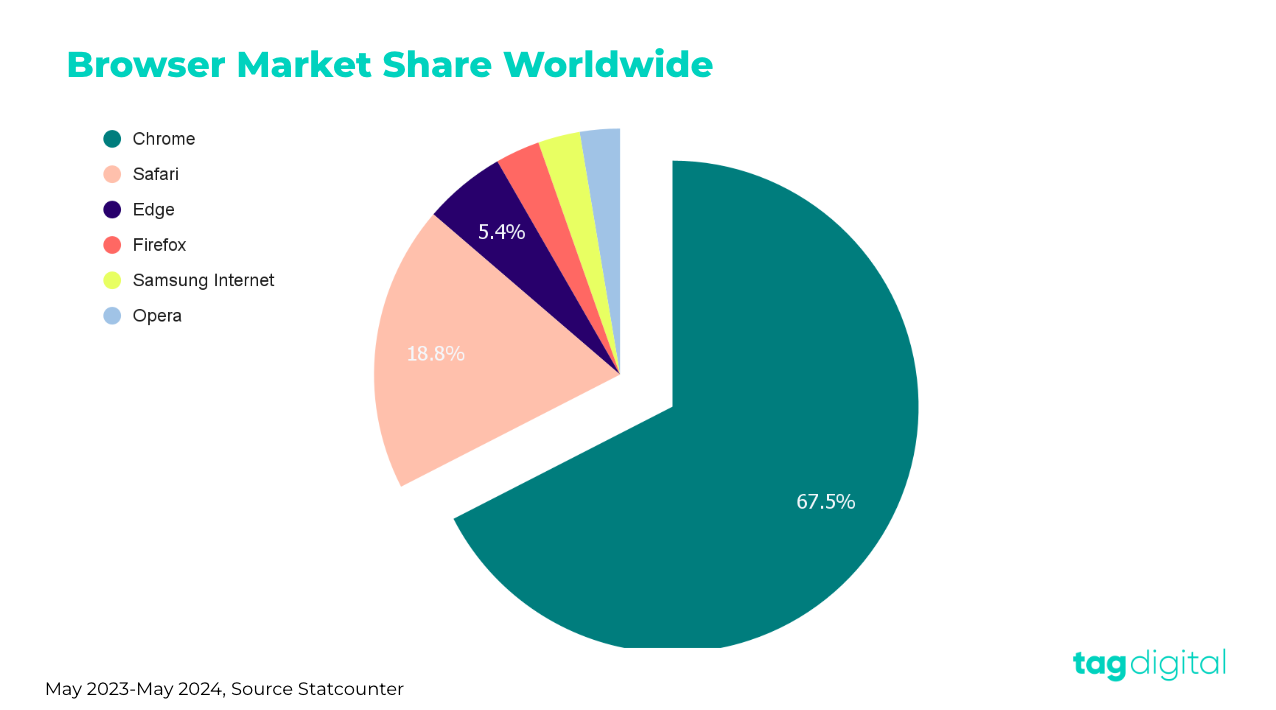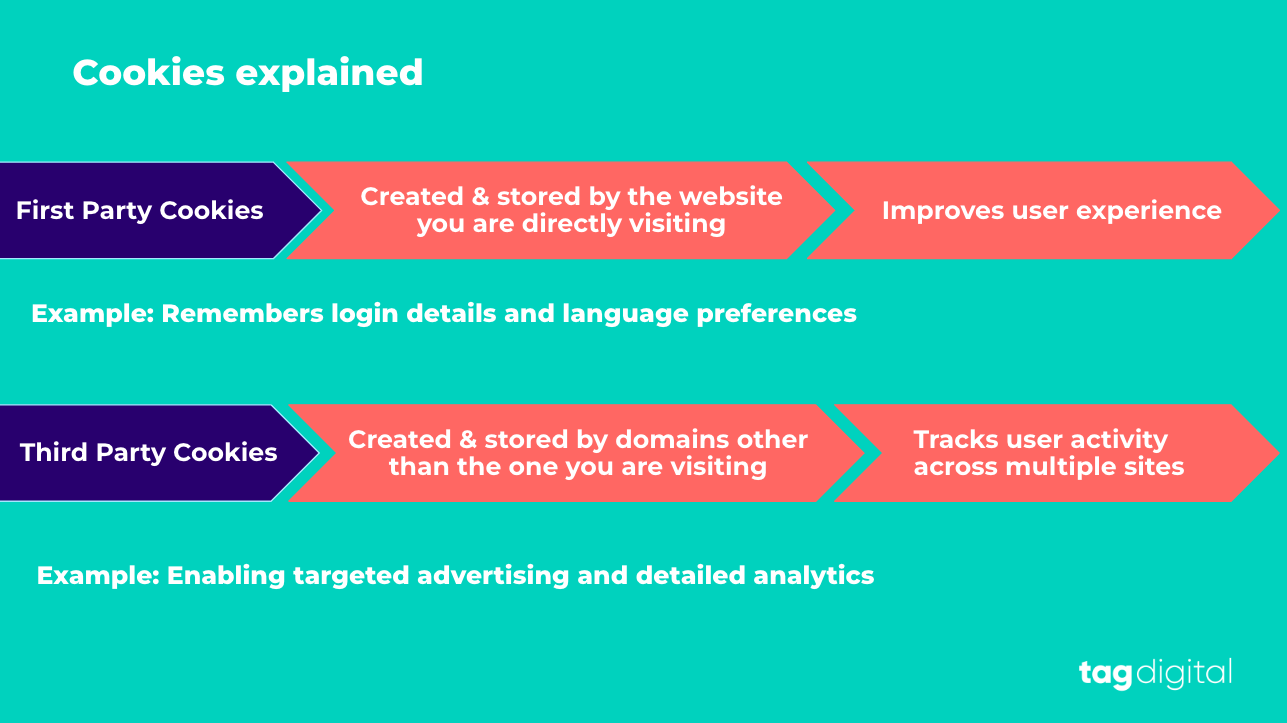Server-Side Tracking: Navigating the Phase-Out of Third-Party Cookies
Written by: Ashley Hamilton, Head of Paid Media

The digital advertising landscape is undergoing a significant transformation with the phase-out of third-party cookies.
This change, driven by growing legal concerns around online privacy and data protection, requires advertisers to adapt quickly to maintain effective ad tracking and data collection.
Ashley Hamilton, Head of Paid Media, hosted an educational webinar titled “Navigating the Future: Mastering Server-Side Tracking.” The webinar introduced the future of conversion tracking for event marketers.
Register for the full webinar now and uncover the benefits to shifting to server-side tracking from client-side tracking.
In today’s blog, we explore how server-side tracking offers a robust solution in this new cookie-less environment. We’ll detail its benefits, challenges, and implementation steps.
Key Topics:
- Differences between Server-Side Tracking & Client-Side Tracking
- Current Status of Third-Party Cookie Phase-Out
- Differences Between First-Party and Third-Party Cookies
- Impact of Cookieless Ads
- Server-Side Tracking as a Solution
- Benefits and Challenges of Server-Side Tracking
- Steps for Integrating Server-Side Tracking
- Tag Digital’s Server-Side Tracking Solution
- Deciding if Server-Side Tracking is Right for You
Differences between Server-Side Tracking and Client-Side Tracking
We find the best way to explain the difference is to visualise it through a typical user journey (see below).

In client-side tracking, which you are most likely using, users click onto your website, and if they have consent enabled, the data is sent directly to the platform (e.g., Google Ads, Meta) to track user behaviour.
In server-side tracking, once the user clicks onto your website and has enabled consent, the data is first sent to your server before being forwarded to the ad platforms.
Current Status of Third-Party Cookie Phase-Out
Google plans to phase out third-party cookies by early 2025. Although this timeline has been delayed three times, it’s important to act now with the inevitable change looming.
Major browsers like Safari have blocked third-party cookies by default since 2017. With Chrome’s significant market share, the final phase-out of third-party cookies from Google represents a substantial shift in digital advertising.
Advertisers must adapt now to this change. Google has already started restricting third-party cookies for a small percentage of users, indicating that we are entering a cookie-less era.

Advertisers must adapt now to this change. Google has already started restricting third-party cookies for a small percentage of users, indicating that we are entering a cookie-less era.
Differences Between First-Party and Third-Party Cookies

First-party cookies are created and stored by the website a user visits. They enhance user experience by remembering login details, language preferences, and other customisations.
Third-party cookies are created by domains other than the site a user visits and are used for tracking activity across multiple sites, enabling targeted advertising and detailed analytics.
Without third-party cookies, advertisers lose a crucial tool for tracking user behaviour across different websites, leading to less precise targeting, potentially higher ad spend, and reduced ROI.
Impact of Cookie-less Ads
The absence of third-party cookies presents significant challenges in tracking conversion performance and building audiences.
Advertisers will need to adjust their approaches to maintain effective ad targeting and performance tracking.
The loss of third-party cookies impairs the ability to deliver personalised ads, measure campaign effectiveness, and optimise marketing strategies.
New solutions, like server-side tracking, are necessary to continue operating efficiently in a cookie-less environment.
Server-Side Tracking as a Solution
Server-side tracking emerges as a powerful alternative to third-party cookies. This method involves storing data on a business’s cloud server rather than on third-party platforms like Google Ads or Meta.
In a typical user journey, data is sent to the business’s server before being forwarded to ad platforms.
This approach allows businesses to pivot from relying on third-party cookies to utilising first-party cookies, maintaining effective tracking and remarketing capabilities.
Benefits and Challenges of Server-Side Tracking
This method offers several benefits:
- Enhanced data security
- Improved data accuracy
- Greater control over data flows and tag management
These benefits lead to better compliance with privacy regulations. However, challenges include:
- Technical complexity of setup and management
- Need for more technical expertise
- Costs associated with infrastructure investment, training, and server hosting
Additionally, not all platforms are currently ready for this tracking method, posing another hurdle for businesses.
Steps for Integrating Server-Side Tracking
To successfully integrate, follow these key steps:
- Set up a Google Tag Manager server container.
- Configure all advertising platforms.
- Ensure compliance with consent banners.
- Connect with dedicated server hosting.
It is also crucial to have a GA4 property and a web container deployed on all website pages if setting up via Google Tag Manager.
Tag Digital’s Server-Side Tracking Solution
Tag Digital offers a comprehensive solution, including:
- Setting up the server container
- Configuring advertising platforms
- Ensuring all tags comply with consent banners
While the solution doesn’t include hosting costs, Tag Digital recommends hosting through Stape.io due to its cost-effectiveness.
This service helps businesses maintain robust ad tracking and data security as third-party cookies are phased out.
For more information and the service costs in your currency, download our Server-Side Tracking Brochure.
Deciding if it’s Right for You
Determining whether this method is suitable for your business depends on several factors:
- It is recommended for businesses that prioritise accurate conversion tracking and data quality.
- It may be less urgent for those not relying heavily on web conversion tracking.
Businesses should consider their strategies for the third-party cookie phase-out and allow sufficient time for implementing server-side tracking solutions to ensure proper setup, testing, and accuracy.








